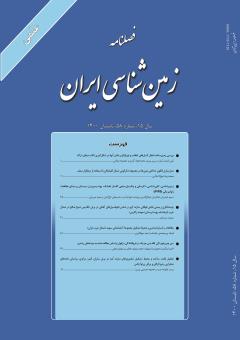تحلیل بافت، ساخت و محیط تشکیل تبخیریهای سازند کُند در برش ساران، البرز مرکزی، براساس دادههای صحرایی، پتروگرافی و پراش پرتو ایکس
محورهای موضوعی :زینب علیزاده عرب 1 , محبوبه حسینی برزی 2
1 - دانشگاه شهید بهشتی
2 - دانشگاه شهید بهشتی
کلید واژه: ائوسن پسین# پراش پرتو ایکس# سازند کُند# سالینا# نهشتههای تبخیری#,
چکیده مقاله :
سازند کُند به سن ائوسن پسین در برش ساران واقع در البرز مرکزی، دارای لیتولوژی کربناته، مارنی، آذرآواری و تبخیری است و مرز زیرین و بالایی آن به ترتیب با سازندهای کرج و سرخ پایینی ناپیوسته است. این برش در بخش قابلتوجهی از ضخامت خود دارای نهشتههای تبخیری است. براساس مطالعات صحرایی، پتروگرافی و دادههای پراش پرتو ایکس، نهشتههای تبخیری سازند کُند بیشتر شامل کانیهای ژیپس، انیدریت، دولومیت، آهک و کوارتز هستند. مطالعات صحرایی و پتروگرافی نمونههای مورد مطالعه، حاکی از آن است که کانیهای ژیپس و انیدریت به سه شکل اولیه (نوع اول)، ثانویه (نوع دوم) و ترشیاری (نوع سوم) تشکیل شده و دولومیتها مرتبط با دیاژنز اولیه هستند. تبخیریهای اولیه شامل لامینهها و لایههایی از ژیپس میباشند و در محیط زیرآبی کمعمق (سالینا) بر اثر تبخیر تشکیل شدهاند. تبخیریهای ثانویه با بافت نودولی، ساخت اینترولیتیک و قفسمرغی، در مرحله تدفین کمعمق (سبخای ساحلی) نهشته شدهاند. در نهایت تبخیریهای نوع سوم با بافتهای آلاباسترین، پرفیروبلاستیک و ساتناسپار در نتیجه رخنمون یافتن تبخیریهای اولیه و ثانویه در شرایط متئوریک فرآتیک به وجود آمدهاند. فراوانی کانیهای تبخیری در برش ساران، به همراه شواهد دیگر در این نهشتهها، بیانکننده گسترش شرایط آب و هوایی گرم و خشک در زمان تشکیل سازند کُند است. با توجه به لایهای بودن رسوبات تبخیری سازند کُند در برش ساران، و همراهی آنها با رخسارههای کمعمق دریایی و وجود ضخامت قابل توجه نهشتههای آذرآواری سازند کرج در زیر این نهشتهها، میتوان منبع یون لازم را برای نهشت این واحدهای تبخیری، آب دریای ائوسن و همچنین مهاجرت یونها از توفهای قدیمیتر پیشنهاد کرد.
The late-Eocene Kond Formation in Saran section, Central Alborz, is a carbonate, marl, volcano-clastic and evaporite succession and the lower and upper boundaries with Karaj and Lower Red Formation is unconformable. The main thickness of the studied section consists of evaporite deposits. Based on the field studies, petrography and XRD data, these evaporite deposits are mostly consist of gypsum, anhydrite, dolomite, calcite and quartz. Field and petrographic study, imply that the gypsum and anhydrite are present in three types: primary (type one), secondary (type two) and Tertiary (type three) and dolomites are related to very early diagenesis. The primary evaporites which are laminated and layered gypsum, were deposited in a subaqueous shallow environment (salina) due to solar evaporation. Secondary evaporites with nodular texture and enterolithic and chicken-wire structures, were formed during epigenetic and shallow burial diagenesis (coastal sabkha). Moreover, tertiary evaporites with alabasterian, porphyroblastic and satin spar textures are related to burial and uplifting of primary and secondary evaporites in telogenesis and phreatic meteoric conditions. The abundance of evaporite minerals as well as other evidences of this sediments in the Saran section indicates a warm and dry climatic conditions during deposition of the Kond Formation. Due to the layered nature of evaporites of the Kond Formation in the Saran section and their association with shallow marine facies and the presence of significant thickness of volcano-clastic deposits of the Karaj Formation below these deposits, Eocene seawater and also migration of ions from older tuffs is suggested as the source of ions required for the deposition of these evaporite units.
